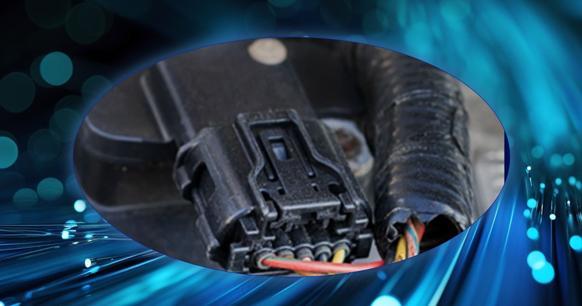
MAF Sensor: The Key to Optimal Engine Performance
For a car's internal combustion engine to function correctly, it is essential that both air and fuel are present. It is essential to maintain an optimal air-fuel ratio to guarantee uninterrupted combustion and enhanced engine performance. Previously, the carburetor was the sole device responsible for regulating the ratio of air to fuel. The advent of modern Engine Control Units (ECUs), also known as Engine Control Modules, has significantly impacted the automotive industry. Mass air flow (MAF) sensors are used to measure airflow.
An internal combustion engine requires both air and fuel to operate effectively. It is essential to maintain an optimal air-fuel ratio to ensure uninterrupted combustion and enhanced engine performance.
Previously, a carburetor was the sole device responsible for regulating the ratio of air and fuel. The advent of modern Engine Control Units (ECUs), also known as Engine Control Modules, has had a profound impact on the automotive industry. Mass air flow (MAF) sensors are used to measure airflow.
What are the functions of MAF sensors and why is it important to ensure their optimal performance?
We will now investigate this further
.
WHAT IS A MAF SENSOR?
A mass air flow sensor is also referred to as an air meter. It is a critical component of your vehicle's functionality. Specifically, it gauges the quantity of air (mass flow of air) entering the internal combustion engine.
Based on these real-time inputs, the engine control unit calculates the amount of fuel required to maintain equilibrium between the air and fuel masses.
Furthermore, it should be noted that air density is subject to change in response to external factors such as temperature, pressure, and humidity. Once more, MAF sensors are of assistance in this regard. In terms of measuring the intake air quantity in each cylinder, they are more precise than volumetric flow sensors.
THE TYPES OF MAF SENSORS
Vane air flow meters represent an older technology for measuring airflow. They are further classified as either VAF signal voltage or Karman vortex air flow sensors. The latter is a more recent design. The device employs a moveable mirror and a phototransistor to measure airflow.
Hot wire air flow MAF sensors represent the cutting edge of MAF technology and are becoming increasingly prevalent in the market. These sensors comprise a thermistor, a platinum hot wire, and an electronic control circuit. The thermistor is a temperature sensor that is used to measure the air temperature. An electronic control circuit maintains a constant temperature for the platinum hot wire. Upon contact with the heated wire, the air temperature is reduced. In response to fluctuations in temperature between the two wires, the MAF sensor automatically adjusts the current to the hot wire.
Additionally, cold wire air flow sensors operate in a manner analogous to their hot wire counterparts. However, they feature an additional cold resistor, enabling ambient air measurement.
SIGNS OF A BAD MAF SENSOR
It can be difficult to identify MAF sensor performance issues, as they are not always easy to detect. It is therefore crucial to seek expert advice and have your MAF sensor replaced if necessary.
The following are the most common indications of an MAF sensor malfunction:
ENGINE STALLING WHEN ACCELERATING
A malfunctioning MAF sensor may result in a variety of driving issues, such as engine stalling, jerking, or hesitating while speeding up. Such issues may be encountered when accelerating or when driving at a constant speed.
Such engine issues may result in accidents and pose a significant safety risk to both the driver and other road users. Should you experience any of these issues, we advise that you arrange for your vehicle to be examined at the earliest opportunity.
RUNNING RICH OR LEAN
Both issues indicate that the fuel-air ratio in the engine is not within the optimal range.
Running rich means that there is an excess of fuel and a deficiency of air. Some of the most common indications of a vehicle operating in a rich fuel-air ratio are reduced fuel efficiency, rough idling, and the emission of black smoke from the tailpipe.
Running lean is the opposite of running rich. This indicates that there is insufficient fuel to match the air entering the engine. This indicates that the MAF sensor is providing inaccurate readings to the ECU, which subsequently fails to blend fuel and air at the optimal ratio. In the long term, this could have a significantly detrimental impact on your vehicle. Prolonged operation in a lean fuel mixture may result in difficulties when starting the engine, as well as engine seizures and engine surging.
What are the root causes of these issues?
The presence of road debris, dust, dirt, and other contaminants in the air can result in the coating of the wires of the MAF sensor, thereby impairing its ability to accurately measure airflow. Inaccurate airflow reports may be sent at lower speeds. As previously stated, an MAF sensor that is not functioning correctly will result in the engine being unable to mix the air and fuel in the correct ratio.
As a result, cleaning the MAF sensor may be an effective initial step. Nevertheless, to guarantee the security of your vehicle, we advise you to have a qualified mechanic inspect it.
CONCLUSIONS
It is important to note that the Mass Air Flow sensor is essential for the optimal operation of your vehicle's internal combustion engine. Based on its airflow measurement, the ECU balances air and fuel. Without a MAF sensor, your car would not function properly. Therefore, it is crucial to have it checked and maintained properly. Fortunately, MAF sensors are relatively inexpensive to replace. Additionally, you can clean them yourself, which is an additional cost-effective option.




